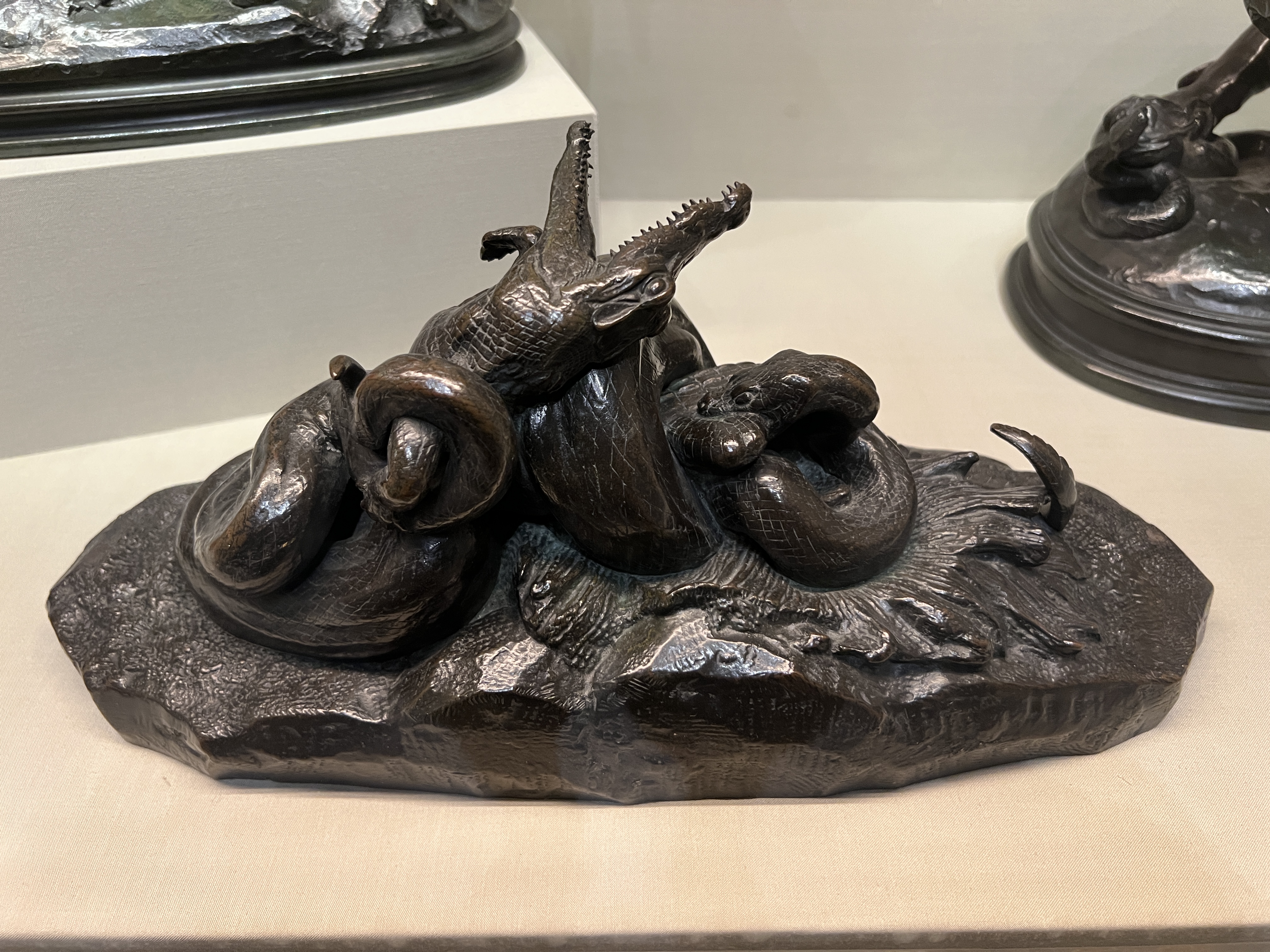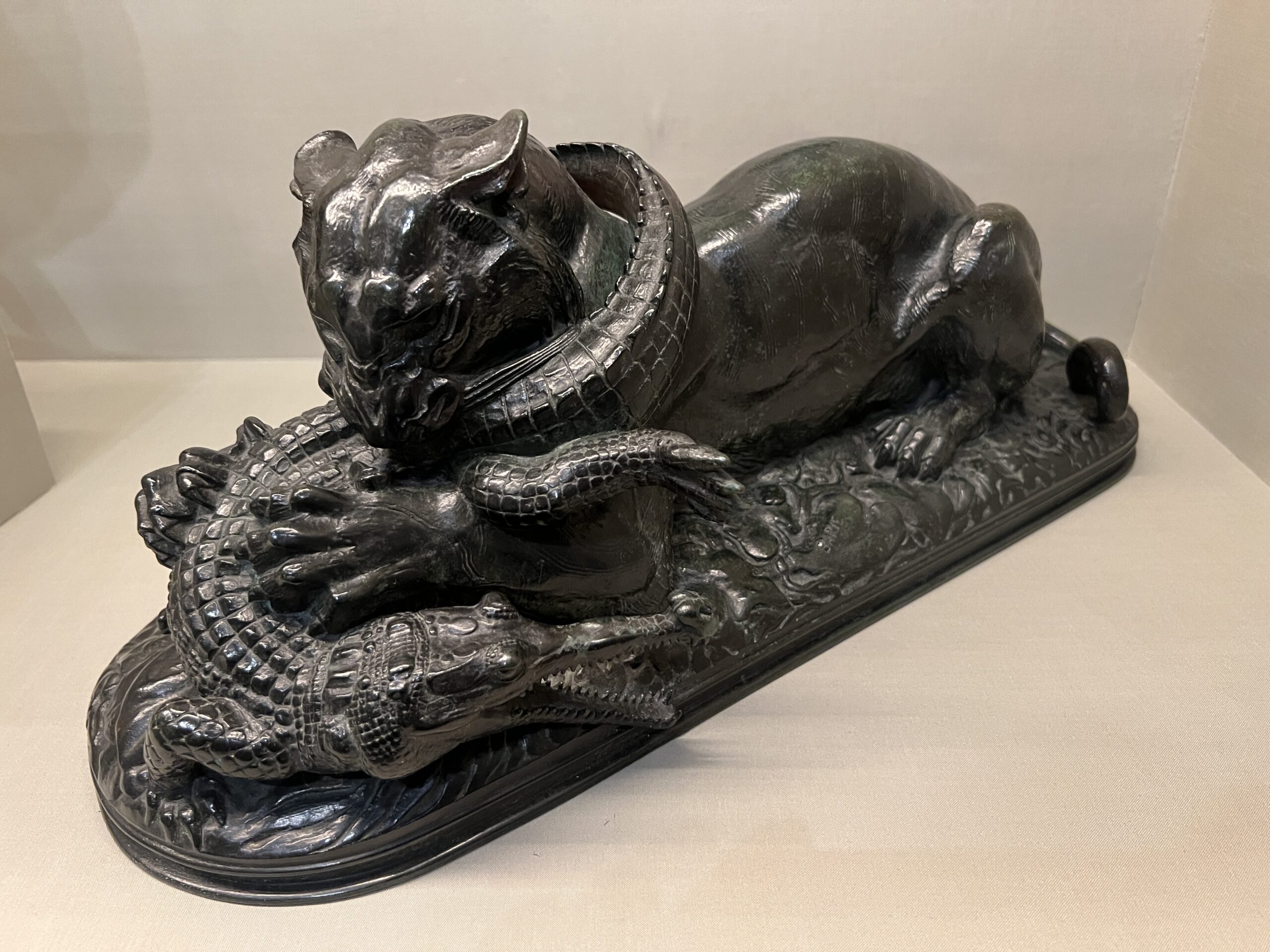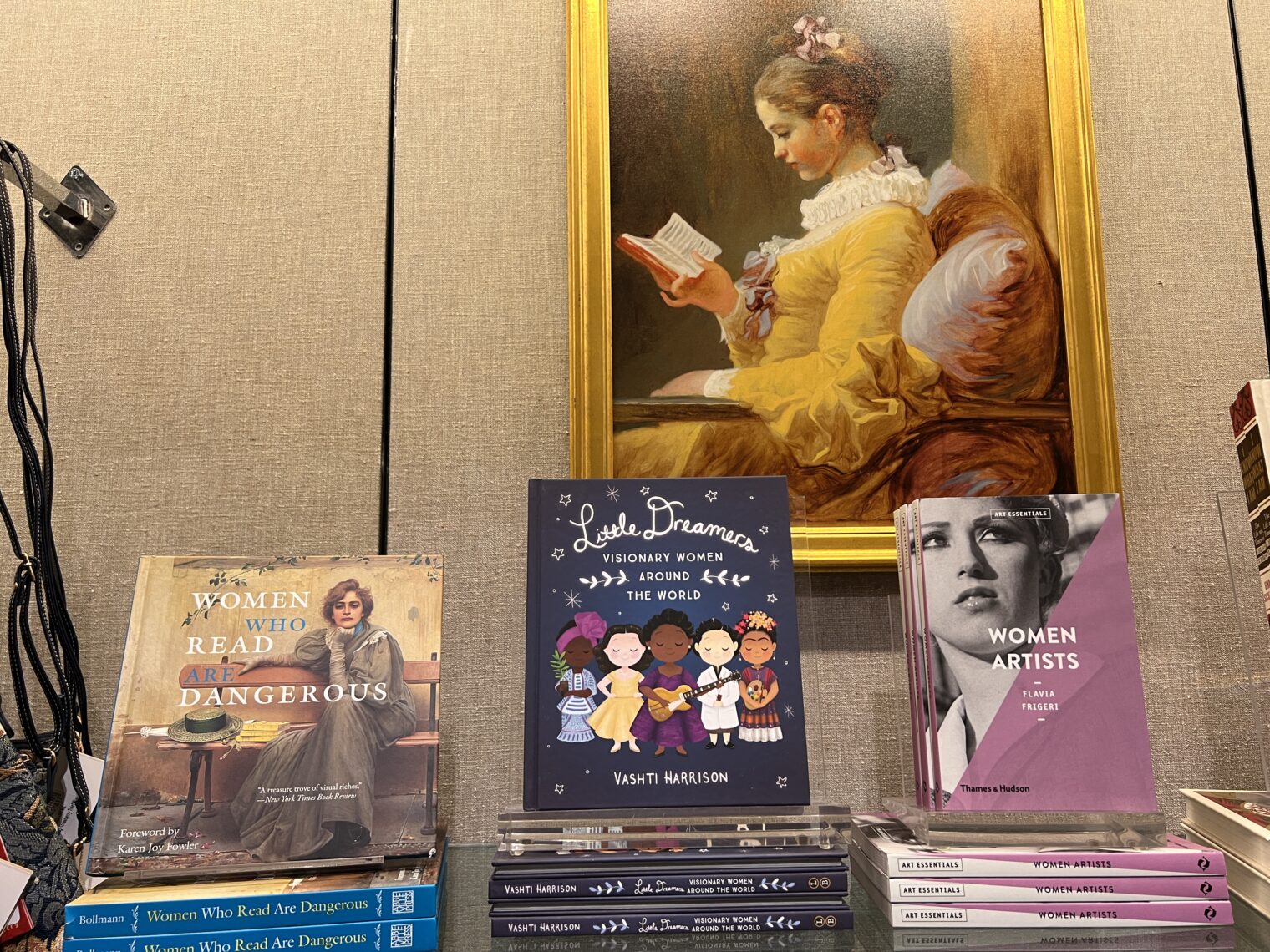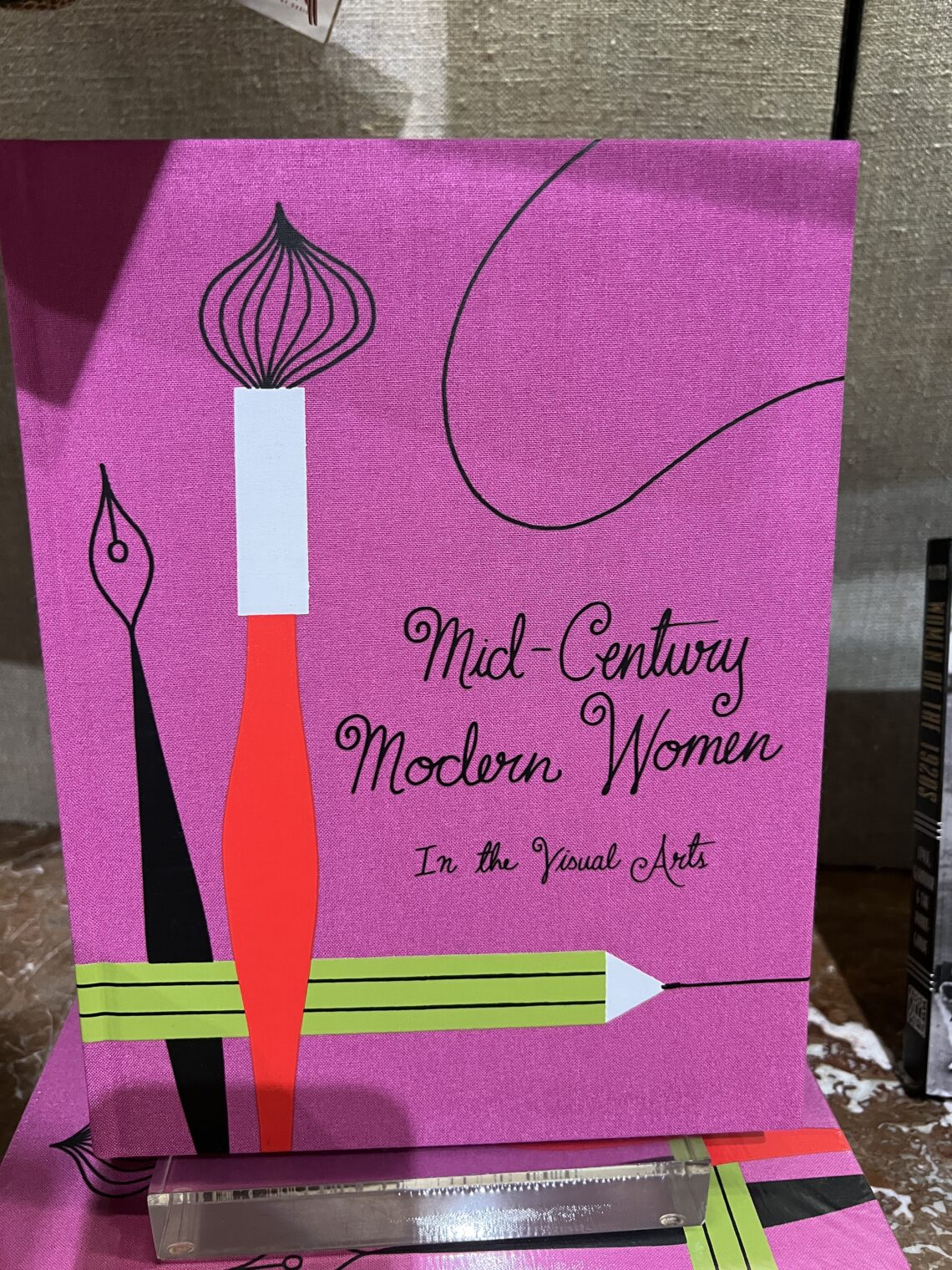I visited the National Gallery of Art recently, trying to figure out when the Hunter Biden wing will open, and was impressed by the extensive collection of animal sculpture by Barye. I thought that it would be fun to get reproductions of the works that include crocodilians for the kids to enjoy back in Florida. Yet, in fact, these aren’t for sale. Now that we have 3D scanners and 3D printers, shouldn’t every sculpture in every museum be available at any size that a visitor wants? The 3D scan could be sent to some hard-working folks over in Asia where a mold would be printed and, eventually, a resin or bronze version shipped to the happy consumer (add a “replica” stamp underneath so that authenticity cannot be falsified). The profit would be shared by the craftspeople and the museum.
This doesn’t happen in the marketplace, so I know that the above idea is defective. But why? The Louvre offers a feeble 7 choices for replica Baryes and they have a huge collection.
This article makes it sound as though there is still a lot of work to be done by hand in making a bronze cast of a 3D-scanned object. So maybe the dream of on-demand replicas in any size is unrealistic with present technology, but surely there is a sufficient market for one or two sizes of each sculpture worthy of being displayed in a museum.
Museums already do this with 2D works. You can order custom prints of works from the Metropolitan Museum, for example (don’t forget to wear a mask if you go into the museum to place the order; they still require all visitors 2 years and up to wear masks). Why aren’t we ready to go 3D?



What can be purchased in the gift shop, you might wonder, if not reproduction alligator sculptures?



Suppose that we had to summarize that last book, What would Frida Kahlo do? How about “When trying to become successful in a career, have sex with a married much older guy who is already very successful in that career”?
The bookstore is behind the times: Frida Kahlo is a potential oppressor who is investigated for cultural appropriation!
https://www.sbs.com.au/topics/voices/culture/article/2020/07/31/should-frida-kahlo-be-accused-cultural-appropriation
Kahlo’s mother was mestizo, Mexican of mixed Spanish and Indigenous ancestry.
(The word “mestizo” has been regarded as racist in several parts of Europe since 1945, which does not stop our contemporary woke race analysts.)
“[Frida] made liberal use of her favoured status, adorning herself in clothing from Indigenous cultures that exist in the present, like the Zapotecs and the Juchitán, people actively oppressed by both white and nonwhite Latinxs who collaborate with colonisation, be it willingly or unwittingly,” writes the Mexican writer, JP Brammer
Fully automated capturing of 3D models was hard even when computing power existed 5 years ago. It required thousands of high res images & took a GPU several days to create a point cloud. It’s obviously no longer possible.
I would not think that analytical geometry and stereometry application to defining shrunk 3D shapes requires intensive computing . But maybe, I have not tried it myslef…
lion: Are you sure it is that difficult? The high-tech Florida dental practice that I found has a 3D scanner for one’s teeth. Instead of making a mold when they need to know the exact shape of your teeth they scan and then have a lab fabricate whatever is required from the transmitted 3D model. A tech manipulates a scanning wand around near one’s teeth to make this happen.
@philg: Interesting you mention that…is it a Galileos Cone Beam X-Ray with CEREC integration you’re referring to?
You should gird your loins and read this article. Or maybe you need a few more friends who are law professors, because postmodernist/deconstructive and classical law professors from sea to shining sea are heavy-duty into this subject.
If you successfully upgrade your 3D-scanning system to Windows 11, it could be that some of that legalese has found its way into hardware. I don’t know.
Warning! It’s quite a read. But before anyone starts making authentic point clouds to make molds and resin, they probably should. Of course, people in countries that don’t give a damn about what UC Berkeley law professors say will probably just go ahead and do it, and you’ll be able to buy them on Etsy or Amazon and have them shipped in cardboard boxes anywhere in the world.
“Just as technology has the power to preserve and protect ancient artifacts, it also invites a dizzying array of legal conflicts over their digitization and replication, particularly with regards to the intersection of copyright law with cultural identity. Unpacking this further, this Article offers a tripartite taxonomy of interactivity: the first, described as extractive (drawing upon the accumulation and selection of data); the second, immersive (drawing upon new forms of user participation through virtual and augmented reality); and the third, derivative (drawing upon new possibilities of user creation). Normatively, I argue that these models of interactivity provide us with an important framework with which to examine the importance of copyright protection for cultural heritage.”
http://illicitculturalproperty.com/katyal-on-technoheritage/
http://www.californialawreview.org/wp-content/uploads/2017/08/3Replacement-Katyal-36.pdf
Tens (or maybe even hundreds!) of millions of people in the United States didn’t know that Critical Race Theory existed two or three years ago. Wait until they hear about Critical Digital Theory!
From the second link above:
“A central area of uncertainty is how law will govern technoheritage, both
inside and outside of the museum. The issues surrounding the changing museum
implicate everything from critical digital theory to cognitive science, social
research, information management, and indigenous studies, in addition to a
variety of other fields.11 Indeed, there is also a great need for legal scholarship
to address the issues raised by technoheritage, since they are intrinsically
relevant to anyone who studies the intersection of user participation, tangible
cultural property, and intellectual property.”
This whole thing was really set in motion by the two artists who walked into the Neues Museum in Berlin with an (I guess) modified Microsoft Kinect 360 sensor ($39.99 used on Amazon) and – defying the museum’s “no photography” rules – (allegedly) surreptitiously scanned the bust of Nefertiti, and then 3D printed what they claimed was the result of their clandestine adventure. Then some “tech-savvy bloggers” chimed in:
https://www.smb.museum/en/museums-institutions/aegyptisches-museum-und-papyrussammlung/collection-research/bust-of-nefertiti/
“Ironically, a few weeks later, a few tech-savvy bloggers suggested that the scan had most likely come directly from the museum’s own archives.4 But the purported falsity of the story, it seems, only further underscored the value of what the artists were trying to say about the relationship between technology, cultural artifacts, and private property.”
SO:
1) Someone has already “done it” (maybe not!)
2) In any case they set off a LOUD alarm in Art and Antiquity legal circles that is still being heard all around the world!
3) I guess which objects ordinary people are allow to be reproduce and sell is still TBD. And I know that I will not be the one who does so. And neither will most ordinary people.
Here is the old school technique: Plaster Caster
https://www.google.com/search?q=plaster+caster
Alex: I did your window clean & treatment. The clay bar and iso really preps the surface for the RainX. Thumbs up!
@Rick: Thanks, I’m glad it worked for you. Yeah, with the iso you can see it dry and if there’s anything you missed, it stands out. The first time I did it, esp. after cleaning the inside of the glass, I was almost afraid to drive the car because the windshield was so clean! “Where is it?” Lol.